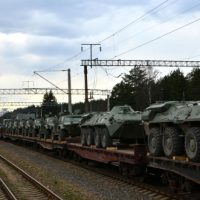Brussels (Brussels Morning) The European Commission has launched its first-ever appeal seeking long-term views about how to enhance the EU’s rural areas. The initiative, which was presented in the summer, aims to mobilise public authorities and stakeholders to act on the needs and aspirations of rural communities.
The EU hopes the new pact will pave the way for a common framework enabling stakeholders at EU, national, regional and local level to engage with one another and cooperate.
Rural areas account for more than 341 million ha, which amounts to 83% of the EU’s total area in 2018. Agricultural land, forest and natural areas alone account for almost 80% of the EU area. According to the Commission, 30.6% of the EU population lives in rural areas.
“Rural areas are the fabric of our society and the heartbeat of our economy. They are a core part of our identity and our economic potential. We will cherish and preserve our rural areas and invest in their future”, Commission’s President Ursula von der Leyen declared.
Community engagement
As a way of sharing experiences and know-how about identified needs and dedicated solutions, the Commission is inviting all interested parties to accept its open invitation to express their commitment to the envisaged goals and to participate in the development and implementation of the Rural Pact.
Moreover, the EU executive intends to facilitate this framework with partners and networks, and encourage the exchange of ideas and best practices at all levels.
Based on wide consultations with citizens and rural stakeholders, the long-term vision for the EU’s rural areas identifies pressing challenges and highlights some of the most promising opportunities that are available to these areas. These include greater connectivity plus more essential services such as hospitals, post offices and banks.
When comparing the average road distance to essential services, urban areas have much quicker access than rural areas. For example, in a city, the average road distance to the nearest doctor is 3.5km, while in remote rural areas, the average distance is almost 21.5 km.
“The development of rural areas requires coherent and integrated rural development approaches. Combining different European funds offers opportunities to invest in infrastructure, technology and people for resilient, inclusive and prosperous rural areas”, Slovenia’s Ministry of Agriculture, Forestry and Food, observed in a statement issued on behalf of the Council.
Between now and June 2022, stakeholders and actors can join the Rural Pact Community and share reflections and ideas about how it should be implemented and developed. In June 2022, the Rural Pact high-level conference will provide the opportunity to take stock of the commitments made and the ideas put forward and facilitate how the next steps should be determined and defined.


